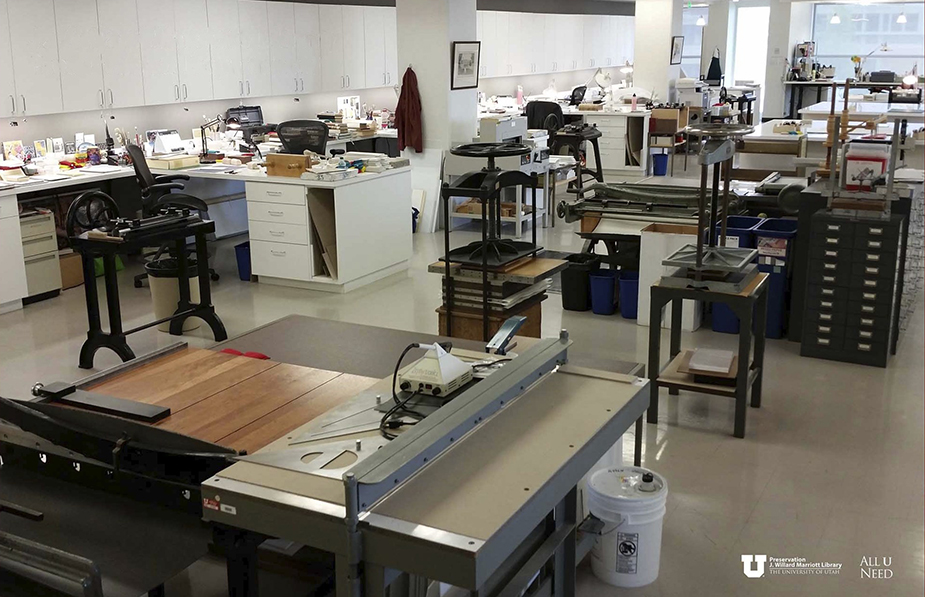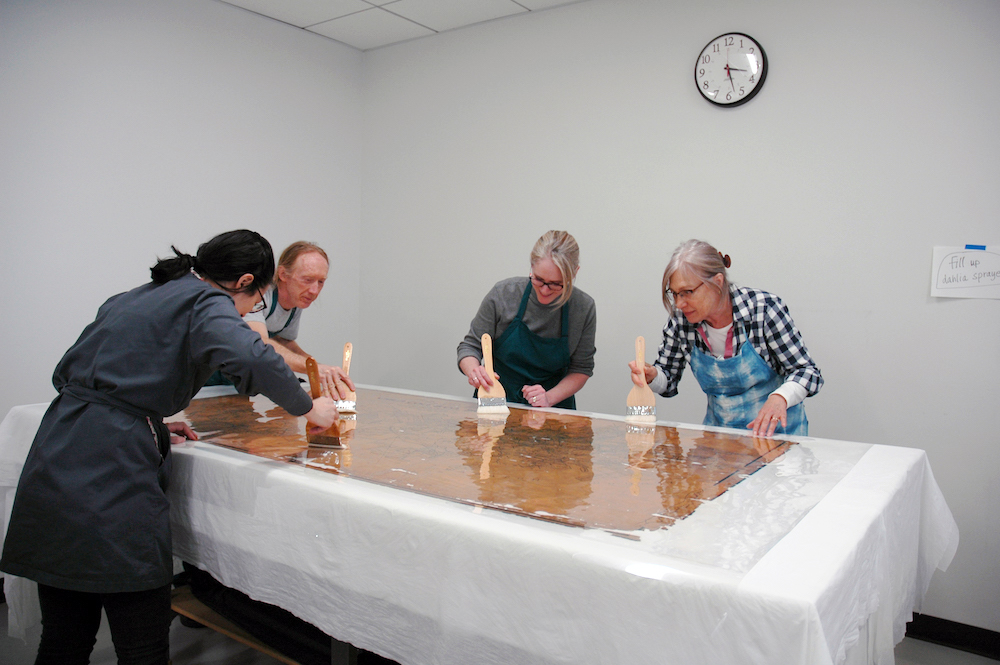Preservation
How are 'Preservation' and 'Conservation' defined at the Marriott Library?
Preservation includes a range of preventive conservation measures used to safeguard historically, artistically and culturally significant collections for as long as they are needed to fulfill the library's mission. Preventive conservation includes setting priorities, allocating resources, and training staff to prevent damage and ensure optimal long-term care of the library's heritage collections. The principal Agents of Deterioration (as characterized by the Canadian Conservation Institute) that must be tackled to minimize physical and chemical degeneration of the library's holdings include:
1. Physical Forces (including Seismic)
2. Thieves, Vandals, Displacers
3. Fire
4. Water
5. Pests
6. Pollutants
7. Light
8. Incorrect Temperature
9. Incorrect Relative Humidity, and
10. Custodial Neglect & Dissociation.
A more detailed explanation of these Agents of Deterioration can be found at The Canadian Conservation Institute webpage.
Conservation, which is remedial, is carried out by the conservators and technicians within the Preservation Department and involves expert, hands-on physical treatment and technical decision-making required to competently care for unique tangible artifacts. In preparation for undertaking this work, conservators must acquire extensive training in art history, science, and studio art through graduate conservation programs or lengthy apprenticeships with experienced senior colleagues. Marriott Library's conservators specialize in book and paper conservation and adhere to a strict code of ethical practice with specific obligations to cultural patrimony, its stewardship, the conservation profession, and society as a whole. These responsibilities are articulated in the Code of Ethics and Guidelines for Practice of the American Institute for Conservation.

Preservation at the Marriott Library
The Marriott Library's Preservation Department occupies a bespoke conservation lab located on the library's 5th Floor. This purpose-built lab supports the hands-on treatment and technical decision-making associated with the conservation of rare and valuable objects housed in the library's general and special collections. The lab is staffed by the Head of Preservation, one book conservator, one paper conservator, and three conservation technicians.
Preservation is responsible for the care of books, documents, manuscripts, maps, photographs, and a variety of three-dimensional objects belonging to the J. Willard Marriott and the Spencer S. Eccles Health Sciences Libraries. Some of the services provided by Preservation to the University of Utah include:
- Reviewing the condition of, and making recommendations for the conservation treatment of individual items or groups of library materials;
- Designing and building custom protective housings (such as custom-fitting boxes, enclosures, mats, and polyester encapsulations for flat paper objects) for collection items;
- Advising and assisting with technical art history and material culture research;
- Providing expertise to protect library collections on exhibit;
- Providing conservation treatments for historic, artistic and culturally significant materials; and,
- Coordinating disaster preparedness and recovery activities.
